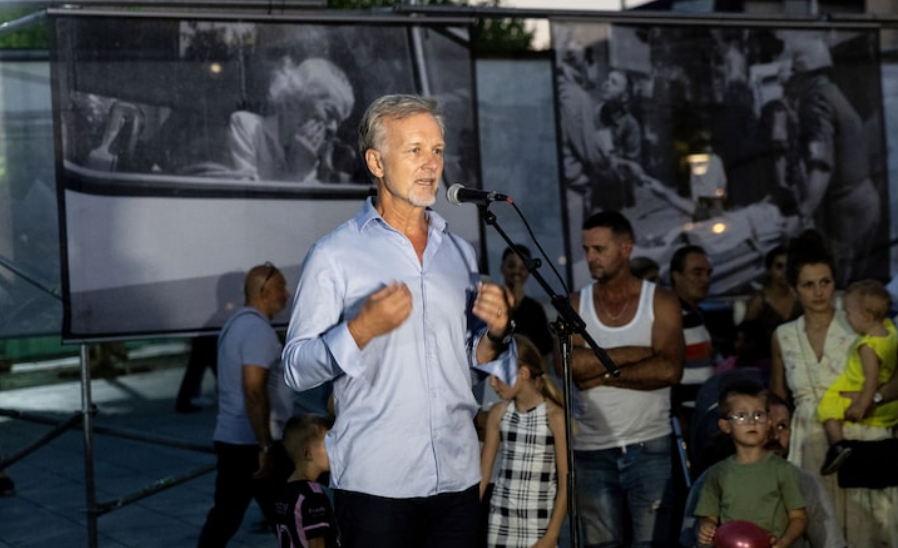A photojournalist who covered historical events such as the conflict in former Yugoslavia, the fall of the Berlin Wall, and Nelson Mandela’s release from jail was fatally stabbed during a weekend trek in the San Gabriel Mountains, and his 19-year-old son has been charged with the crime.

Paul Lowe, 60, a British photographer, war journalist, and University of the Arts London lecturer, died Saturday on a road near Stoddard Canyon Falls after suffering “trauma to his upper torso,” according to a news release from the Los Angeles County Sheriff’s office.
The county medical examiner’s office stated that Lowe died as a result of a neck stab wound. A man, later identified as Lowe’s son, was observed driving away and then involved in a solo vehicle crash a few miles away. According to the sheriff’s office, he was detained based on evidence found at the scene and statements made by his son and witnesses.
The Los Angeles County District Attorney’s Office, which charged one count of murder against the son, Emir Abadzic Lowe, stated that a passerby alerted first responders to the scene. It noted that the son’s arraignment was scheduled for Wednesday. The office did not disclose whether he had a counsel.
According to the University of the Arts London College of Communication website, Paul Lowe was a conflict, peace, and image professor. The institution stated that he has been “a deeply valued colleague” for almost two decades. “Paul’s work throughout his career made a ground-breaking impact in presenting images of war and conflict and, later, in the complex cultural negotiations involved in peace and reconciliation work,” according to a statement from the institution. “Paul leaves an incredible legacy as an award-winning photographer, author, critic, and, not least, as a compassionate educator.”
His book “Bosnians” documented Bosnia’s ten-year conflict and post-war circumstances. It was published in 2005. The website lists such recent books as “Photography Masterclass,” “Understanding Photojournalism,” “Reporting the Siege of Sarajevo,” and “Photography, Bearing Witness and the Yugoslav Wars, 1988-2021.”In an interview with The Guardian, Lowe stated that he concentrated on wounded and hospital patients during the first days of the Sarajevo siege. He finally got concerned about what happens to individuals when they are “reduced to the medieval conditions caused by a siege.”
“People would risk their lives for a little pleasure,” he told me. “And it is for children who do not want to be kept indoors. Kids could spend more time outside during quieter periods—I photographed children swimming in the river during a cease-fire. However, Serbian snipers could see the river, as well as much of the rest of the city.
“Paul was a highly skilled, brave, and committed photojournalist who continually put himself in harm’s way to show the world the reality of war zones and humanitarian crises around the world,” said Santiago Lyon, a former vice president and director of photography at The Associated Press who worked with Lowe during the Sarajevo siege in the early 1990s. “He became an accomplished and well-respected instructor, dedicated to training future generaturnalists. His premature passing has had a profound impact on the photojournalism community, and we are shocked. Lowe taught at The VII Foundation’s academy, which teaches and equips journalists from underrepresented communities in the media.


